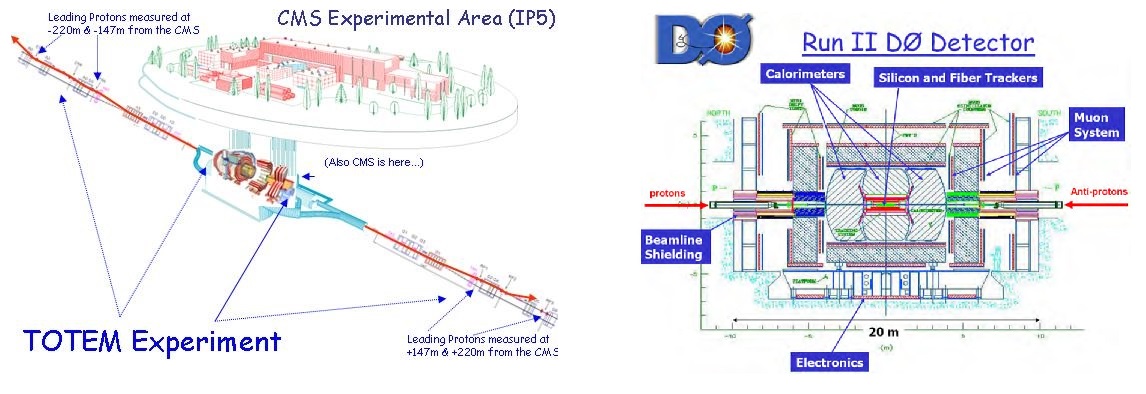Odderon Discovery Tutorial

Image source: https://www.lhc-closer.es/taking_a_closer_look_at_lhc/0.totem Image source: http://hepd.pnpi.spb.ru/hepd/images/d0.jpg
In March 2021, the TOTEM collaboration at CERN and the D-Zero collaboration at Fermilab jointly announced the discovery of the "odderon" particle, a color-neutral gluonic state. The purpose of this tutorial is to help teachers present this important discovery to their students.
Workshop Tutorial for Teachers
Divide into four groups. Each group is assigned to find answers for the Foundation Question plus one of the four Group questions. Each group presents to the other groups what they have learned.
Foundation Question for all 3 groups: What are gluons?
Group Questions (one per group):
- Briefly describe the TOTEM experiment.
- Briefly describe the D-Zero experiment.
- What is an elastic collision in classical physics? Is it different in quantum physics?
- What is an odderon? How can its effects be observed?
Each group reports out their findings.
Resources:
Foundation Question
Question 1
Question 2
Question 3
- Hyperphysics: Elastic and Ineastic Collisions
- Isaac Physics: Collisions
- Video: Elastic and Ineastic Collisions
- Video - What Happens Inside a Proton Collision?
- Britannica: Wave-Particle Duality
Question 4
- CERN: TOTEM and D0 collaborations announce odderon discovery
- Gizmodo: Physicists Discover the Elusive Odderon, First Predicted 50 Years Ago
Probing Deeper
- Discovery paper: Comparison of pp and pp¯ differential elastic cross sections and observation of the exchange of a colorless C-odd gluonic compound
Classroom Tutorial for Students
Learning Objective: The student will be able to:
- Explain how the odderon was discovered.
- Describe how this discovery is important to physics.
Notes for teachers:
- The odderon can be thought of as color-neutral bound state of three gluons (red, green, blue) with an extemely short lifetime.
- The odderon was discovered in elastic collisions between protons (TOTEM) or protons and antiprotons (D-Zero). These collisions directly relate to a topic covered in introductory physics.
- Protons and antiprotons are quantum objects which means that their "elastic" collisions include effects that we do not consider in macroscopic collisions. Quantum effects include diffraction, interference and the exchange of photons (QED), gluons (QCD), and other particles, including, now, the odderon.
- Students are not responsible for learning about collisions in the context of quantum physics. It is important that they become aware that these effects exist. Odderon exchange is one such effect.
- The resources list for students is shorter to keep the tutorial accessible at their level.
- Students should be in groups of 3-5 with the following order of activities:
- Explanation of tutorial.
- Using a jigsaw approach, each group researches answers to the Foundation Question and one of the assigned Group Questions. The Group Questions should be distributed evenly between groups.
- Record what they have learned. Simple posters with diagrams are best.
- Each group reports its results.
- Class discussion.
- This tutorial pairs well with the Data Activity TOTEM Data Express.
Student Guide: An odd discovery at Fermilab and CERN.
